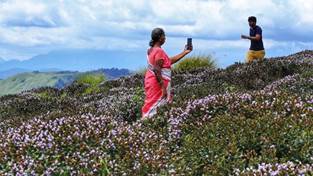Free Courses Sale ends Soon, Get It Now


Free Courses Sale ends Soon, Get It Now



Disclaimer: Copyright infringement not intended.
Context: The Ministry of Environment, Forest and Climate Change (MoEF) has listed Neelakurinji ( Strobilanthes kunthiana) under Schedule III of the Wildlife (Protection) Act, 1972, including it on the list of protected plants.
Details:
About:
© 2024 iasgyan. All right reserved